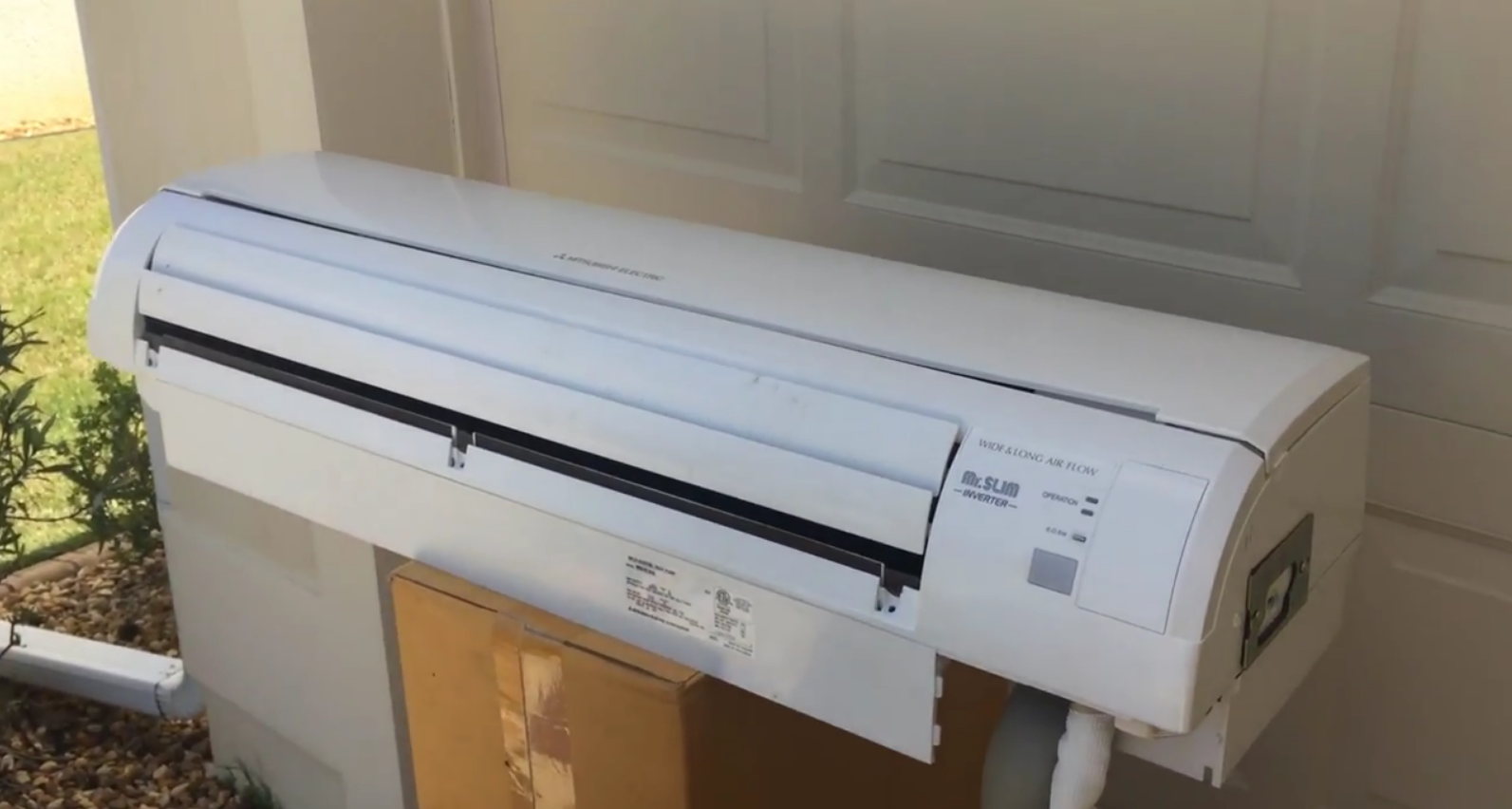Misubishi Ductless Evaporator Coil Replacement
May 2, 2018


Jesse starts by pumping the system down to save as much refrigerant as possible. The suction pressure was 133 PSI with a superheat of 12 degrees. Pumping down a mini-split is almost the same as pumping down a normal split system.
Then, Jesse carefully unboxes the new evaporator coil and checks it over. The coil replacement requires us to disassemble the entire indoor unit and redo the flare connections. Jesse uses an extended screwdriver to expose the connections on the outside. Then, he removes the indoor unit on the inside.
When disassembling the unit, Jesse ensures that he keeps track of all the screws he removes from the unit. He also unclips the unit’s face from the unit to expose the coil. He also makes sure to stay in his cardboard work area so that he doesn’t scratch the unit or spill rust residue from the drain onto the customer’s driveway. Mini-splits have coil sensors and wiring under plastic guards, so you’ll need to watch out for those if you disassemble the unit as Jesse does.
The blower wheel can only come out if you use an Allen (hex) key or loosen the set screw on the wheel. If the blower wheel has a set screw, it can be difficult to reach, so you’ll want to use a long Phillips-head screwdriver. The blower shaft is indented between two rivets, so you need to make sure the set screw is on the inside rivet of the shaft.
Then, Jesse removes the evaporator coil and can replace it. With the blower wheel already out, Jesse decides to give it a cleaning. (We highly recommend cleaning those whenever you can.) He starts off by inserting the new coil, taking the clip from the old unit and putting it on the new one, putting in the blower motor, putting in the blower wheel (tightening the set screw correctly), checking the wiring configuration, putting the drain pan back in at a slight angle (disconnecting and then reconnecting the drain hose to make the process easier), tidying up the wiring, putting all the screws back in place, and putting the face back on the unit.
When putting the unit back on the wall, Jesse makes sure the unit is clean and fastened securely.
When doing a decay test, be sure to use a vacuum-rated core remover tool, install the micron gauge at the side port of the core removal tool, use large hoses, and pull a vacuum below 400 microns. See what the decay rate is within at least 10 minutes. If the microns rise consistently over time, then you likely have a leak. We’d prefer that you DON’T use a manifold if possible.
Before leaving the job, Jesse ensures that the drain works properly by sending some water down the drain and watching for it to come out on the exterior.
Comments
To leave a comment, you need to log in.
Log In